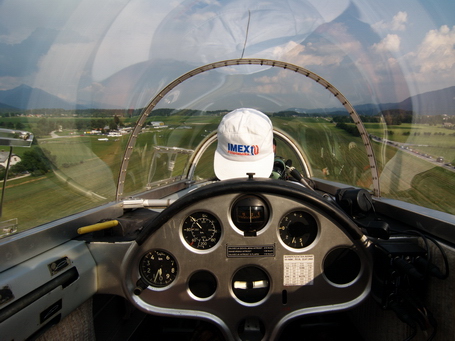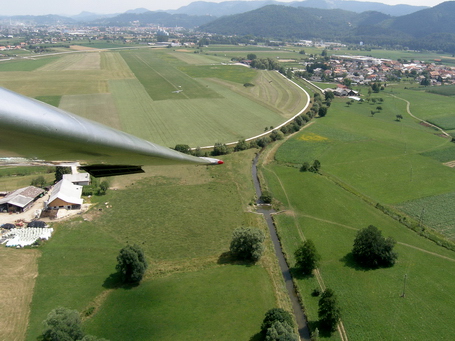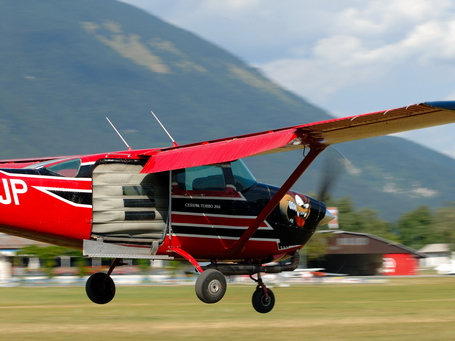



aerokurier Online Contest
OLC-I | Skupno OLC-I
OLC-SI | Skupno OLC-SI
                

                
                





 ostale povezave
ostale povezave
|

Varnost pred vsem – 4. del
Before Landing Check list
(OPENSOARING, 5. oktobra 2016, besedilo Milan Petković Petko, foto Milan Korbar, tehnični urednik Milan Korbar)
Last but not least it comes the landing check list:

The acronym for this check list was entirely invented by myself and it was done in a way to emphasize a safe approach and landing after a long and tiering cross country flight.
»Fasten seat belts and FOCUS!«
Fasten seat belts is the first item on this checklist because typically most of us will loosen our seat belts somewhat on a long cross country flight. Therefore prior to our landing and especially if this landing is going to be an outfield landing it is imperative that we tighten our seat belts!
The acronym FOCUS was chosen because again prior to our approach and landing it is very important to be getting focused! As mentioned earlier this checklist is supposed to emphasize maximum level of safety after a lengthy cross county flight. It is at no surprise that all of us will feel some level of fatigue after flying for 5, 6, 7, 8, 9, 10 or more hours . . . and it is very likely that once a pilot crosses the finish line of a long and successful flight that his attention tends to go down feeling that he has accomplished his goal and now comes the easy part which is approach and landing. Let me remind you that many accidents have happened after crossing the finish line and it is important to stay focused until your glider is securely tied down and your logger turned in to the official observer.

F: Flaps and Flow
Flaps: start making your flap selection for approach and landing. If you can make your final flaps selection on downwind prior to the spoiler check this will significantly reduce your workload on the base leg and final.
Flow - dump the water ballast (if you had any)
O: Other traffic - scan for other traffic always! and especially in the vicinity of an airport
C: Cross wind - what kind of wind will you have during your approach and landing and how will you adjust your flight pattern and speed for it?
U: Under carriage - gear down and locked and verified down and locked. Double check that you do have the correct indication that your landing gear is down and locked and that the wind noise level has increased in your cockpit as you lower the gear. A number of pilots have flown the entire flight with their gear down and then brought it up in the traffic pattern and made a gear up landing!

S: Spoilers, Speed and Spot
Spoilers (dive breaks), when on down wind and in a position to safely land even if your spoilers were to brake in a fully open position check that your spoilers are indeed extending properly. Briefly open your spoilers and visually verify by looking left and right over your wing that they are extending. This check verifies not only that your spoilers are functioning properly but also that your hand is on a correct lever. Again, a number of accidents have happened and many more almost happened because the pilot had his hand either on a flaps lever or a gear lever and was trying to extend the dive brakes on final.
Then spoilers should be fully stowed but not locked, this should ensure that the spoilers will work once you need them and your hand will stay on the correct spoiler lever. If you still need to make final flaps selections you will of course have to move your hand therefore do this in a careful manner because your spoilers might tend to extend on their own.
For those of you thinking that this spoiler (dive brakes) check is not necessary let me assure you that I know of several cases where the spoiler has failed requiring an emergency landing. If on down wind the spoilers were not to extend during this check the pilot will have sufficient time to adjust his landing pattern for a no spoiler landing.
Speed: As a function of wind you will need to decide what approach speed you will maintain during your final approach to landing. It is typical to add 1/2 the head wind component and full gust speed to your normal no wind approach speed (up to a maximum of 20 kts). Example: if your head wind is 8 kts, gusting to 14 kts you should add 1/2 head wind which is 4 kts and an additional full gust which is 6 kts, therefore adding a total of 10 kts to your normal approach speed. For light tail wind approaches and landings there is no need to add anything.
Spot: this refers to your aiming spot, desired touchdown spot and stopping spot.

In conclusion these checklists and procedures were created as a summary of different techniques observed and used by glider pilots around the world (Europe, Africa, USA and Australia). I use them on a regular basis and find them to be a useful tool augmenting procedural flying and improving the safety of the flight. It is your individual choice to incorporate them or not, fully or partially or develop your own procedures, check lists and techniques which will enhance the safety of your flying.
I hope that by writing this text I was able to share some of my experiences and knowledge that I have gained in the past 30 plus years of active glider and professional flying.
Thank you and safe and happy flying to all of you 
Milan Petković, Petko
                                                  
na vrh strani
                                                  
|

Matt »Balleka« Wright – v spomin
Varnost pred vsem – 4. del
Before Landing Check list
Varnost pred vsem – 3. del
The Rudder Waggle
Varnost pred vsem – 2. del
Before Take Off Check List
Nova mladost starega Herkula ali
Prijedor v družbi s Ptujem, Mariborom in Celjem ...
Varnost pred vsem – 1. del
Šolanje jadralnih pilotov 2016 v AK Celje
O Cirrusu d.o.o. malo drugače
Tehnični dan Aerokluba ALC Lesce
Matevž Lenarčič – še tretjič okoli sveta
Sobota z Edom Krištom ter Livno 2016
Dva dneva v Celju – za užitek, izobraževanje in razmislek
Se obetajo letalniku lepši časi?
Svetovni rekord na vitlo – 1852 m
                
Blog 2017
Blog 2016
Blog 2015
Blog 2014
Blog 2013
Blog 2011
Blog 2010
Blog 2009 |

|








